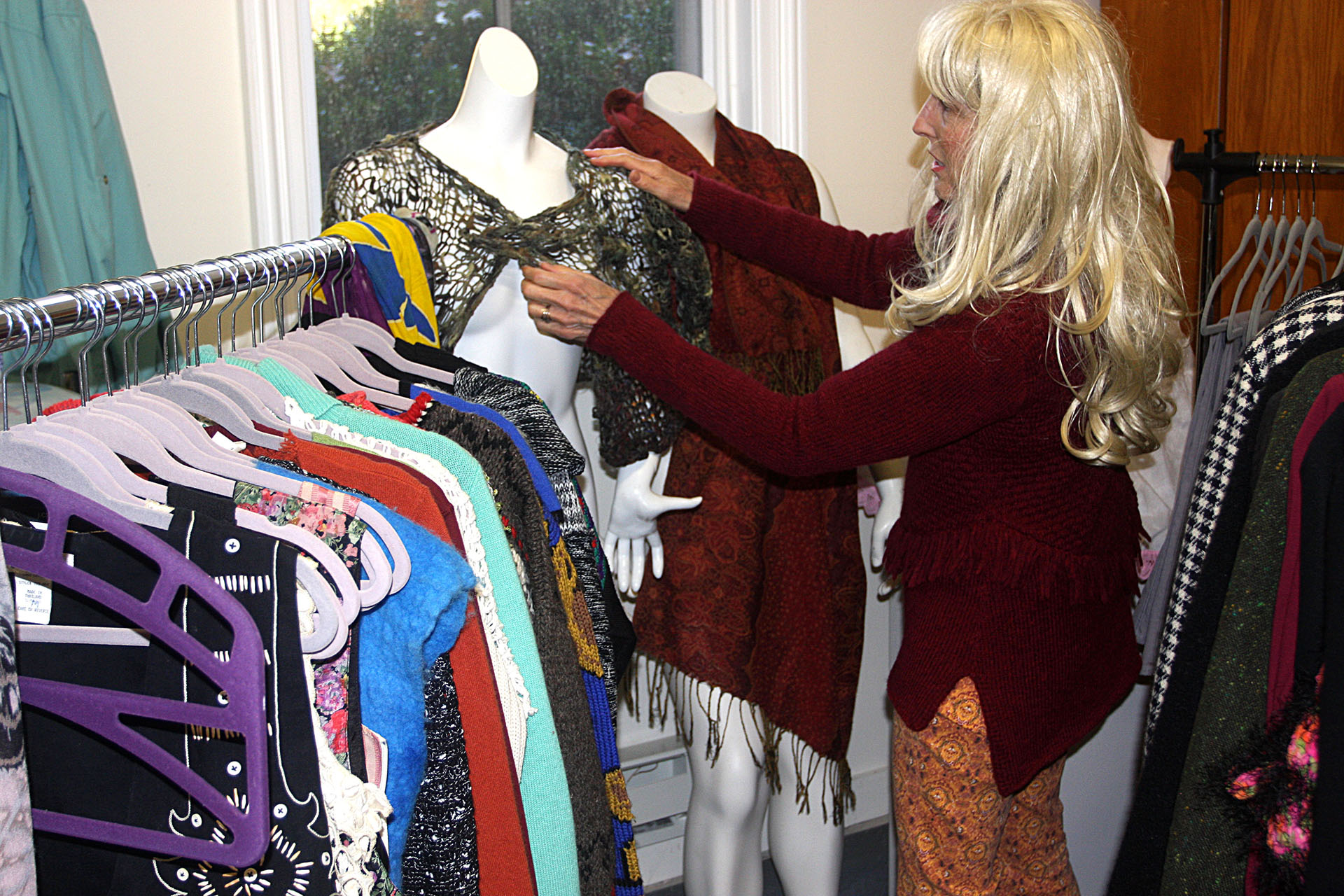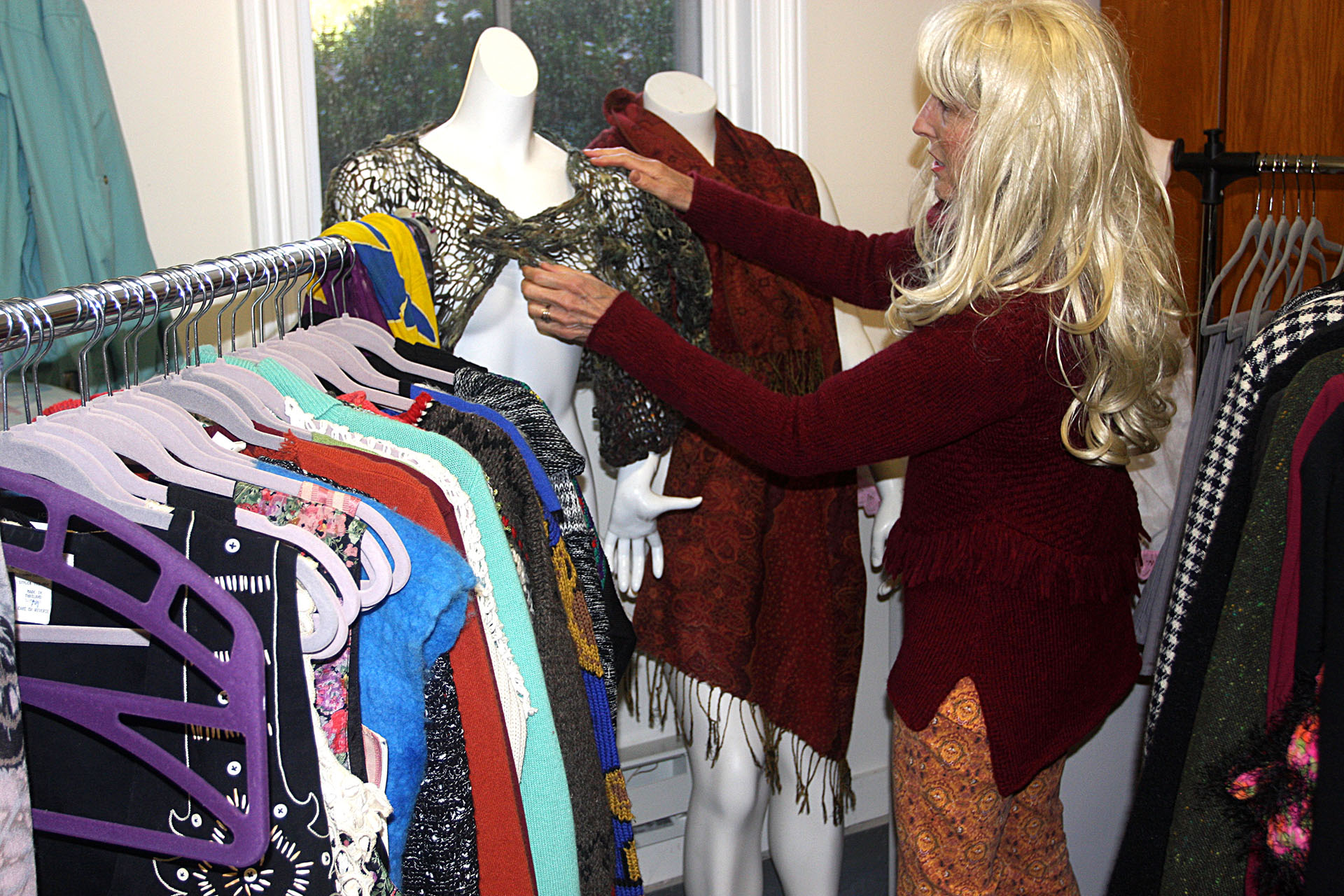The Fabric Of Our Lives


Miuccia Prada once said, “What you wear is how you present yourself to the world, especially today, when human contacts are so quick. Fashion is instant language.” Wise words that resonated with local artist and community engager, Setha Low. Living in the Northwest Woods of East Hampton, where she creates ceramics and fabric sculptures at her art studio, she conceptualized the event “The Fabric of our Lives” for December 21 through 23 at Ashawagh Hall. The event, which will also feature a photography and sculpture exhibit, is held with the hope “to bring different parts of the town together through redistributing” tangible, valuable assets from her life. Therein, to build a community.
How did you come up with the idea for this event?
This is certainly my first experiment in creating a community engagement and art event! I was thinking of West African women exchanging used clothing in markets or clothing swaps in local United Kingdom neighborhoods as ways of women getting to know one another. It was also inspired by discussions with artist friends about what we decide to keep and what we give away or use in our artistic practice. I worry about global warming, and when I read that three percent of our carbon footprint is based on the production and consumption of clothes, it seemed time to create a piece of art about our overconsumption.
What artwork will be shown?
The community/art event is part of an art exhibition, “The Fabric of Our Lives,” that includes the photography of my husband, Joel Lefkowitz, and my fabric sculptures as well as a retrospective of ceramic “body” sculptures in the larger gallery spaces of Ashawagh Hall. The smaller room, what I am calling “The Wardrobe,” will be set up as a large closet full of clothes with stories and comments rather than prices on four-by-two-inch inch colored tags. The tags will indicate whether the clothes are very old, have an important memory, no longer fit or are damaged in some way, and will have descriptions of when I last wore the piece.
Do you come from a fashion background?
The right clothes meant a lot to my mother and are part of my connection to her Hollywood past, even though she did not have a fashion background. I am an anthropologist interested in contemporary social relations and the built environment. From my point of view, each piece of clothing marks a
special moment or relationship in life and
reflects a person’s changing sense of self.
What do clothes symbolize to you?
How it expresses who they are or what they are feeling that day. Many women tell me that as they get older, they do not think as much about what they wear, and that might be true. But it could also mean that as older women, we are supposed to become invisible. I think that some of my interest in clothing and its complex meanings is a way to fight against the tendency to disappear and, instead, attempt to use clothing politically, socially, and personally as a force. It is a form of creativity that we participate in everyday and can be life enhancing. In this event, I am hoping that sharing clothing will have an impact.
Where are many of your clothes from?
I do like unusual things, and I tend to shop when I travel. I love to bring home something to wear that will remind me of being in another place. Usually from local marketplaces because of the intimate contact with the women and men who I am buying from. I like to learn about the piece and try it on while the seller laughs and joins in the fun. I had an outfit made in the central market in Accra, Ghana, where the entire section of the market watched me being measured for a “traditional” outfit. I ended up spending the day talking with the women about their work and families. But I equally enjoy discount shopping and frequent our local stores when clothes are on sale.
What is the oldest piece that will be available?
The oldest piece is probably 50 years old and was my mother’s that I also used to wear. Of my pieces, there is a suit from 1989 that I met my husband in. I think that there is a very old pair of leather jeans that I bought in 1984.
What’s a shocking piece someone might find?
There is a wedding dress, a very simple one from 1994, and some outrageous boots that I bought on sale at LG and never could wear.
How are these “stories” told?
People can try on clothes and learn why they were important to me, based on short sentences on the colored tags, and share their own clothing stories with others who are there.
Can you share a story that particularly stands out, should someone be unable to make it?
It is hard to say what is the best story. Maybe the suit that I wore to lunch with my prospective husband. It was a houndstooth check with a flared coat and a pencil skirt, below the knee like today. The president of my university came by to tell him (my husband) that I was available and that I dressed nicely. I was so embarrassed.
You’re giving away your clothes for the holidays. Do you gift loved ones clothes or prefer to purchase other things?
Wonderful question. I do both. I have a niece I love to give my clothes to, and she got some pieces that are not on the rack. But I try to purchase experiences for my friends and family, adventures that we can do together and remember.
Ashawagh Hall is located at 780 Springs-Fireplace Road in Springs. The opening reception will be on Saturday, December 22, from 5 to 7 PM. Others are also invited to bring their own clothes to the exchange. Visit www.sethalowart.com or email lowsetha@gmail.com.
nicole@indyeastend.com



